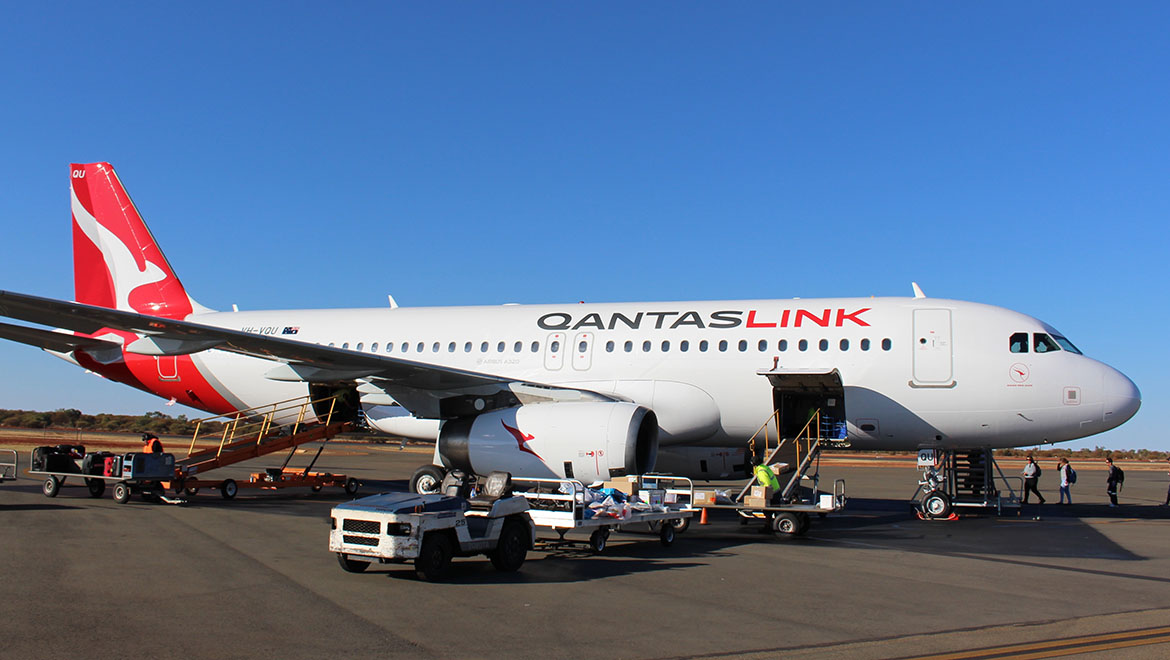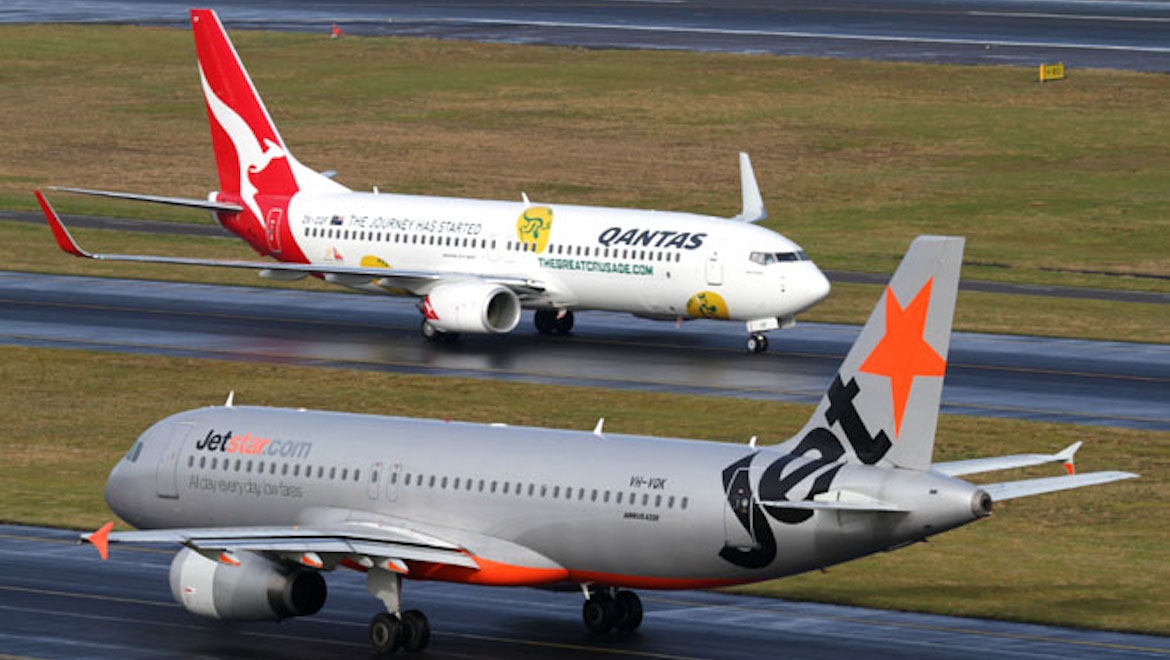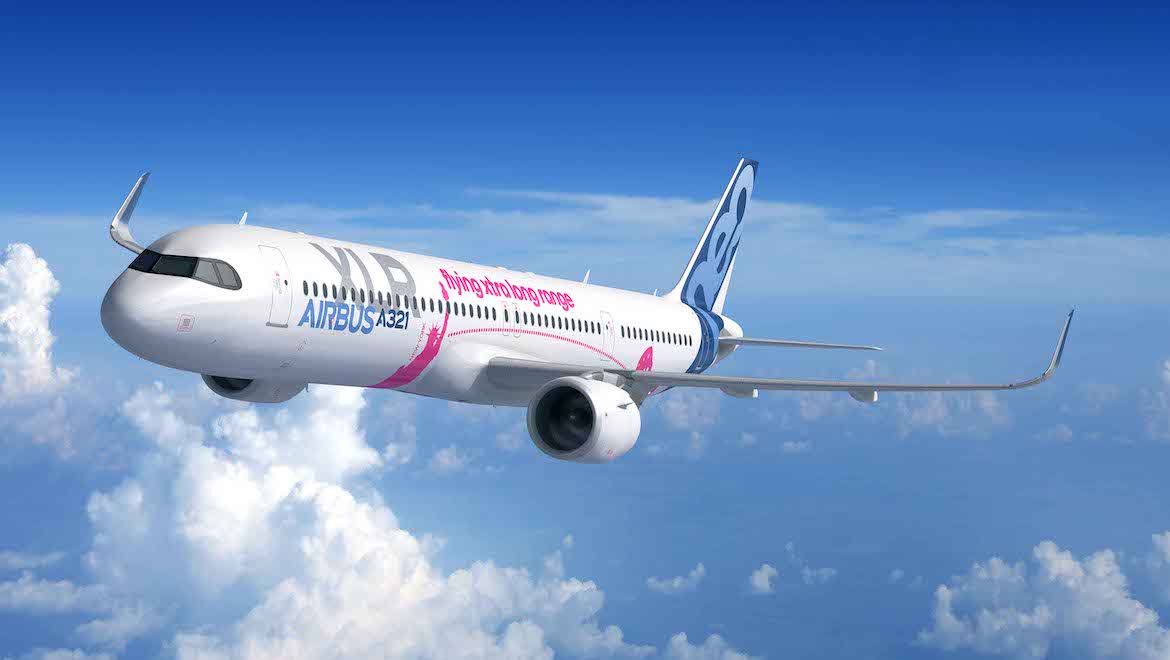
Qantas has added 36 A321XLRs to the airline group’s Airbus A320neo family aircraft order book, with the extra long range narrowbody to be delivered from 2024.
The airline group announced on Wednesday the order for 36 aircraft comprised 10 new orders and 26 conversions from its existing order of 99 Airbus A320neo family aircraft.
Qantas group chief executive Alan Joyce said the aircraft could be used by either Qantas or low-cost carrier (LCC) Jetstar.
“We’ll take a decision closer to the time about which parts of the group will use these aircraft, but there is plenty of potential across Qantas and Jetstar,” Joyce said in a statement.
“We’ll also take a view on whether they are used to replace older aircraft or whether they are used for growth, which will depend on what’s happening in the market.”
Currently, Qantas subsidiary Network Aviation operates A320s from its Perth base, while Jetstar’s franchises in Australia and New Zealand, Japan, Singapore and Vietnam fly A320 family aircraft.
(Jetstar also flies Boeing 787-8s out of Australia, while it has Dash-8 Q300 turboprops on regional routes in New Zealand.)
Meanwhile, Qantas has 75 Boeing 737-800s that are used domestically within Australia and on some international routes. The airline has said previously it would turn its attention to replacing those aircraft after it completed Project Sunrise evaluation for an aircraft capable of flying nonstop from Australia’s east coast to London and New York with a commercially viable payload.


The long-standing A320neo order was first placed in October 2011, when Qantas put pen to paper for 32 A320s and 78 A320neos.
It chose the CFM LEAP-1A engine for the aircraft in 2012.
The order was later topped up to 99 A320neo family aircraft, split between 54 A320neo and 45 of the larger A321neo, with deliveries scheduled to begin in 2019.
In February 2018, Qantas announced it has restructured the order book, both pushing back first delivery and including 18 long-range A321LRs for Jetstar Australia and New Zealand. Deliveries of those A321LRs would begin in mid-2020 and would be used domestically within Australia and on some international routes, such as to Denpasar.
Qantas said the group’s orders following Wednesday’s change would now comprise 45 A320neos, 28 A321LRs and 36 A321XLRs.
“The order includes significant flexibility for the Qantas Group to make adjustments to delivery schedules depending on market conditions,” Qantas said.
Launched at the Paris Air Show on Monday, the A321XLR would have a range of 4,700nm and seating for 180-220 passengers in a typical two-class configuration, figures from Airbus showed.
Technically, the A321XLR differs from the A321LR in that the auxiliary centre tanks (ACT) in the hold area otherwise used by luggage and/or cargo was supplemented by a new integrated rear centre tank (RCT), installed as more of a permanent feature than the removable ACT.
Meanwhile, a modified landing gear would enable an increased maximum takeoff weight of 101 tonnes. Further, Airbus said the aircraft also had “an optimised wing trailing-edge flap configuration to preserve the same take-off performance and engine thrust requirements as today’s A321neo”.

Deliveries were expected to begin in 2023, with Middle East Airlines (MEA) the launch customer.
Orders for the aircraft so far have come from Aer Lingus, Cebu Pacific, Iberia and Saudi Arabian Airlines, as well as from leasing companies.
In an Australian context, Joyce said the aircraft was designed to “fly further and more efficiently than any other single aisle jet on the market”.
“It can fly routes like Cairns-Tokyo or Melbourne-Singapore, which existing narrow-bodies can’t,” Joyce said.
“That changes the economics of lots of potential routes into Asia to make them not just physically possible but financially attractive.”
















Lechuga
says:They’ll be for Jetstar. Funny how they’re putting a lot of focus into Jetstar.
Pappy
says:Not so sure about that.
There’s a better than odds chance Qantas is now eyeing off the 737 replacement in the wake of the MAX disaster. I can’t see them buying it, to be honest. They’ll defer orders indefinitely and transfer orders for Dreamliners.
Considering 1 in 4 polled in the US said they’d never step foot on a MAX and another 1 in 4 said they were unsure but nervous, I can’t see too many airlines taking a risk of a 25% – 50% passenger loss on an airframe. A 5% loss would result in an extraordinary board meeting, let alone this.
Other than the obvious MAX replacement, XLR opens up a myriad of additional options where widebody economics don’t stack up. That is, where you rarely fill more than 50 or 60% of a 787 or A330. But these legs are profitable with a nice long range single isle, not unlike the 757 that unfortunately never made into Australian registration.
I think we should all watch this space as the Qantas Group leads the way in fleet construction to deliver on clever and ‘out of the box’ route scheduling. This is where the best airlines in the world make a shed load of money.
William
says:The previous B737NG was probably the safest aircraft flying as recorded in Feb 2019 with an accident rate of 0.06 per million flights. The MAXs issues are confined to the MCAS system. That is now fixed and once recertification is achieved I see no reason that that MAX won’t achieve the sterling record of the B737NG
PaulE
says:I’m willing to bet that this is the start of the replacement of the 737-800’s. It may also mean that ADL might finally get some international QF flight using this aircraft. ADL – SIN would seem be the obvious first choice. BUT, having recently flown in Europe on Finnair and Lufthansa A321’s, it takes an excruciating amount of time to load the aircraft. The A321 of any sort would simply take too long to turn around on the MEL/SYD route.
William
says:I suspect the A321XLR will also replace many A330-200 where the routes are between 2500-4000nm.
James
says:I think if they can turn around A330’s on the triangle, I reckon they’ll sort out an A321. Jetstar already have them so I don’t see the drama.
Stu Bee
says:I’ve heard that Qantas is definitely leaning towards the A320NEO to replace the B737’s…
Palletised baggage and freight removes manual handling of bags – less back issues with loaders.
Craigy
says:You have failed to mention that Jetstar Australia also operate A321 domestically
Geoffrey
says:I wonder when Virgin will look at the economics of the 321? There is a lot of routes it can do, more economically their current fleet. Who knows, their order for the 737 Max has been put back, nominally for monetary reasons, but maybe second thought on Boeing’s attitude on adding safety technology as an add on.
G
says:When you sit on the ramp and watch ground crew load bags into both the B737 and A320, you realise how inefficient and antiquated the B737 is for today’s operations. A320s in Qantas colours would not only look awesome but make sense for a full service carrier with larger numbers of checked in baggage to quickly load and unload them. QF Group has been slowly increasing their Airbus fleet and learnt a lot about efficient ops via it’s subsidiaries. Can’t wait to see an all Airbus QF domestic fleet.
Richard
says:I wish Qantas would start putting more priority into making Jetstar Australia more of an airlne you’d want to fly with. For myself and I’m sure many others it’s the airline of last resort. You don’t get a customer satisfaction rating that low without annoying a lot of customers. Qantas needs to start taking a good hard look at their “problem child” and make some tough decisions.
Sam
says:From the Financial Review
The new planes, ordered as part of the airline’s ongoing fleet renewal, could allow the older Jetstar planes to be used for more capacity for the Western Australian fly-in, fly-out services, Mr Joyce said. Another option could be using the planes for freight, or perhaps a mix of the two options.
Mr Joyce said the new planes, in particular the A321 XLRs, were a great opportunity for the airline’s low-cost carrier Jetstar, although they may also be used in the Qantas fleet.
“We see this as a great growth opportunity for Jetstar,” he said. “This creates growth opportunities for Jetstar on routes at the moment that may not be economic.”
Seems the orders are mainly with Jetstar in mind
Arkair
says:Over last few days many major 737 operators including American and China Airlines have joined Qantas in placing big oders for A321XLR!
Clearly airlines have lost faith in Boeing and are getting in 5he rapidly growing order queue at Airbus.
Hopefully these aircraft will see Qantas retun to its heyday of the 80s and 90s when Singapore was their major hub.! Ideal aircraft to use from Canberra, Adelaide, Hobart, Townsville and Newcastle!!!!!
Robert York
says:Do people want to fly long distances in single aisle aircraft? Personally, I don’t. On a recent AUK-BNE flight I booked Air New Zealand’s A330-200 flight for the extra comfort.
hadfh
says:If you’re in economy as most of us are, it doesn’t make a difference as the seats are the same. Business class is a bit different but thats the airlines choice, not the aircraft manufacturer as there’s no reason why a good business class seat can’t go in a narrow body. I have seen some airlines that have fitted narrow bodys with fancy looking lie flat business class seats in 757s (which has a slightly narrower fusalage than A320).
I didn’t know ANZ had A330s. Looking at their actual fleet, pitch and width of economy seats is vertially identical in the 777, 787 and A320. Though the Q300 gets 3cm extra seat width…
Stu Bee
says:@Robert York, Air New Zealand doesnt have any A330’s. Do you mean B777 or B787?
MERVYN CROWE
says:Having flown many sectors in the A321 in Europe, USA and here with JQ, its definitely NOT my favourite aeroplane, and I think its a backward move to squash people into a single aisle aircraft for long distances. Give me a 777 or 330 any time.
All this big spending talk from Joyce and co. is all very well, but they need to address the situation where they owe Perth airport umpteen millions for outstanding landing fees and charges, and I believe ( correct me if I am wrong her) two other major Australian airports as well. Pay up Alan, do the right thing here !
Corey
says:Qantas hasn’t paid in full the landing fees at Perth is because they’re trying to negotiate a better deal since they’re the most expensive in Australia plus Perth isn’t allowing Qantas to have more international flights from their current terminal. Qantas want to paid a fair and reasonable price as what they pay else where. They want more flights out of Perth as well how ever they want and need those flights from the 1 terminal to allow easier and better transition for customers and crew. They want what they’ve got the the London service to France and other European Countries yet Perth won’t allow them.
Anon
says:Incorrect. If you read Perth Airport’s submission to the Productivity Commission review of airport pricing, Perth Airport Ltd claim that the HOA between the airport and Qantas allows international flights from the QF terminal to “European destinations, Singapore, and Auckland”. Unlike what AJ has been saying, there’s nothing stopping QF from launching flights to Paris from their new terminal tomorrow. The contract between the airport and QF currently allows it, and always has.
The disagreement began when Perth Airport refused to agree to amending the HOA to allow the Joburg flights to depart from the QF terminal as well.
MP
says:Qantas must seriously be looking at the benefits of fleet commonality with JQ… maintenance savings over time would be worth the cost of retraining 737 aircrew
Adam muggleton
says:Does anyone remember when taking a flight to Europe or the USA thar there was a separate route map brochure in the seat pocket? Or when you could write on an airlines post card that had a cool image of the plane you are flying on? I believe it would be cool to replicate this experience. Qantas could establish a retro service (4 days plus) using a A321 neo long range to do this. Plane would be a mix between business and high end economy class. Service would be based upon the 1960 experience, uniforms, food etc. also multiple stops like Singapore, India, Mid East. I believe there is a market out there, Anyone agree?
Sam
says:No
Trish
says:I wonder if this plane would enable routes such as Perth to Wellington or Christchurch direct?. Or exotic routes like Perth to Ko-Samui?
James
says:Spot on Trish. Hoping ideas like that are being thrown around the table!
William
says:Canberra-Queanbeyan is a region of 600,000 population under serviced by international flights. An A321XLR could reach the hubs of Singapore,Kuala Lumpur,Hong Kong, Bangkok. Singapore is best positioned in my view.